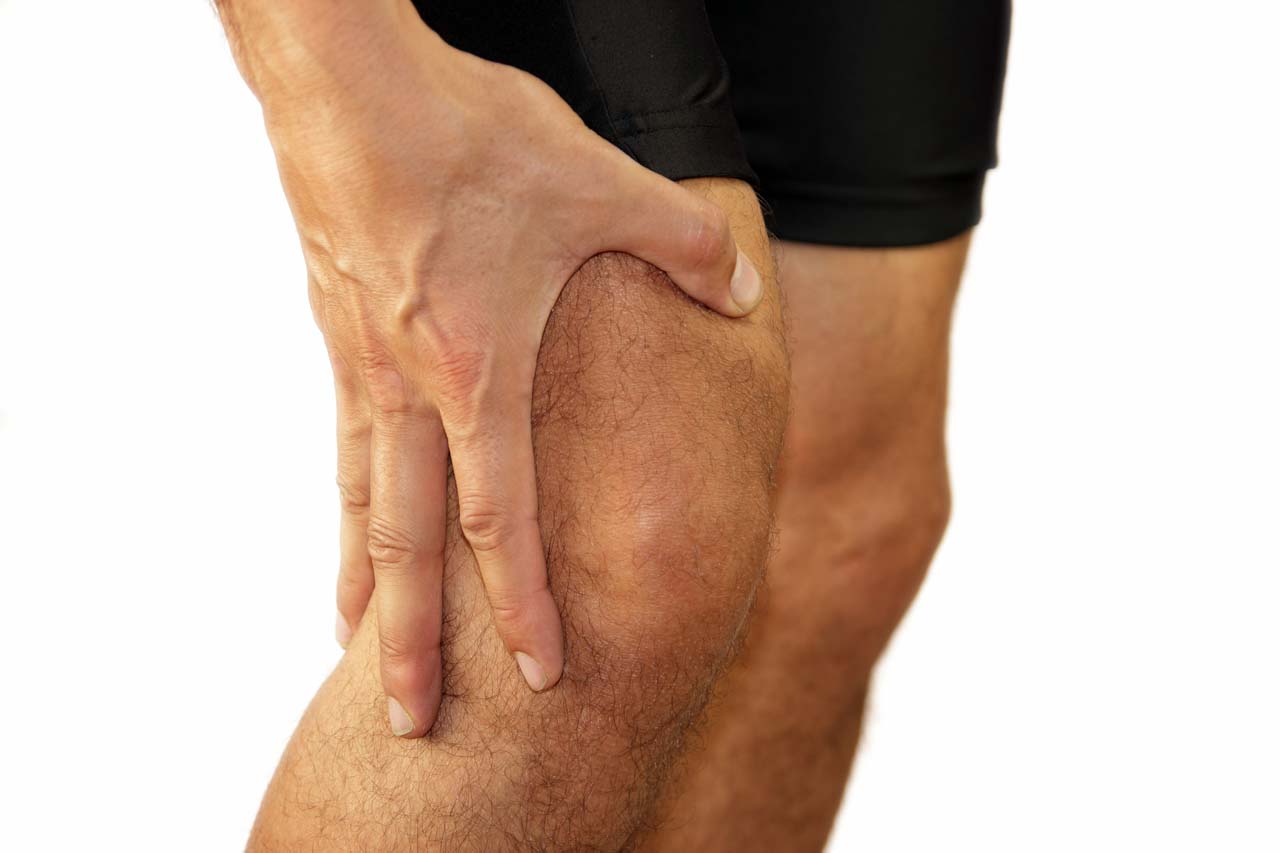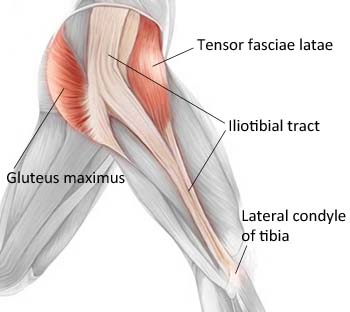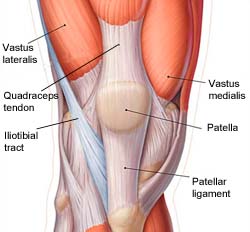Knee pain caused by  Iliotibial Band Syndrome (ITBS) is a common injury resulting from activities that involve repeated flexion and extension of the knee. ITBS is also called runner’s knee because it is common in distance runners. Massage offers pain relief by reducing tightness in the muscles that are connected to the iliotibial band.
Iliotibial Band Syndrome (ITBS) is a common injury resulting from activities that involve repeated flexion and extension of the knee. ITBS is also called runner’s knee because it is common in distance runners. Massage offers pain relief by reducing tightness in the muscles that are connected to the iliotibial band.
ITBS causes pain felt on the outside of the knee. Pain anywhere else along the IT band is not ITBS. Onset is gradual and pain is usually only felt during active, weight-bearing motion. The pain may go away after a period of rest but returns when the repetitive motion of the knee starts again.
If you have ITBS, running on sloped surfaces or downhill can be especially painful. Distance runners are prone to ITBS because they spend greater time in the weight-bearing phase of the running gait. Cyclists are also affected by ITBS due to the number of repetitions of repeated flexion and extension of the knee.
Anatomy
The iliotibial band is a strong, thick sheet of connective tissue that runs the entire length of the outside of the thigh. The gluteal muscles and the tensor fasciae latae (TFL) muscle connects to the upper part of the IT band. The IT band is flat and wide for most of its length, narrowing to a cable-like structure that crosses over the lateral epicondyle of the femur and attaches to the upper part of the tibia.


ITBS is caused by inflammation as a result of continual rubbing of the cable-like section of the IT band on the lateral epicondyle of the femur as the knee is repeatedly flexed and extended.
Treatment and Massage
Rest, ice therapy, new shoes, gait modification, and stretches are often recommended for ITBS.
It is impossible to stretch the IT band itself. Tightness of the gluteus maximus and TFL can contribute to ITBS by pulling the IT band tight, increasing the friction with the femoral epicondyle. Working those muscles to relieve tightness provides pain relief by reducing the friction.
The glutes and upper thigh muscles should be part of every massage, especially for athletes. These muscles are important in every type of movement and regular massage can prevent them from becoming too tight and causing problems.
If you’re suffering from ITBS make an appointment with me to see how therapeutic sports massage will help ease your pain and get you back to performing your best.


